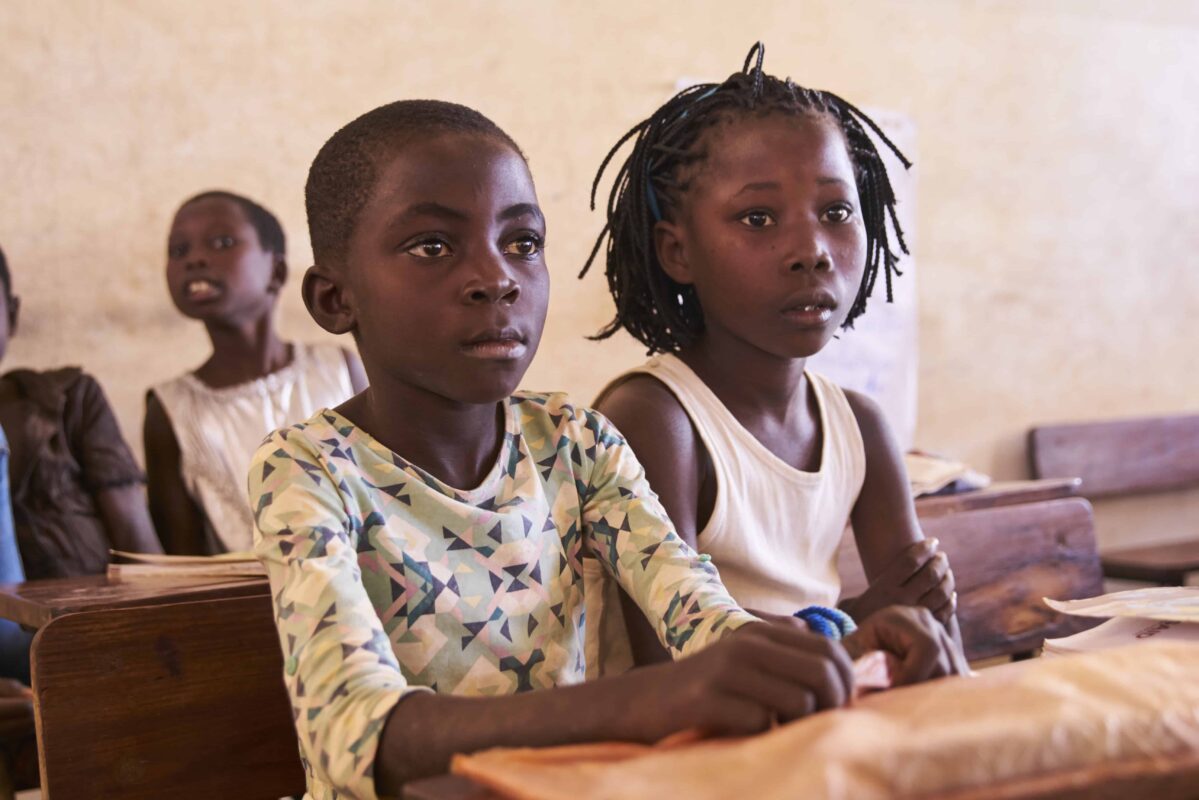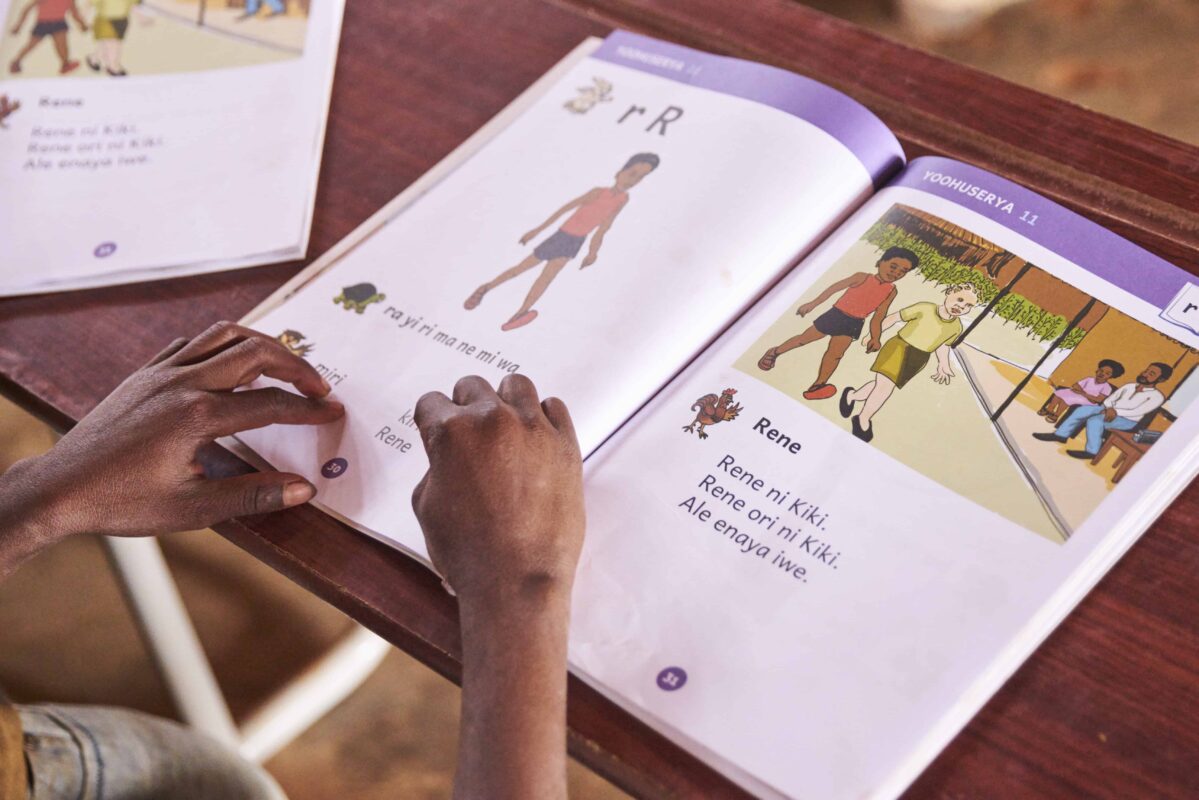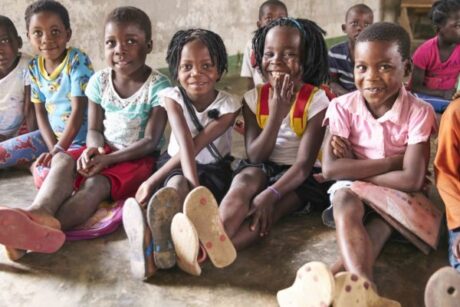Étudiants dans certains 2,000 Les écoles du Mozambique se sont inscrites dans un nouveau, Le programme national d'éducation bilingue a connu des réalisations substantielles dans les compétences de lecture et de compréhension de première année, Grâce à l’accent mis par le programme sur l’enseignement des compétences en lecture dans les langues de la langue maternelle comme la première étape vers l’alphabétisation.
Des élèves en classe 3 fréquenter les écoles participantes dans deux régions du pays, 43.2 pour cent a atteint le niveau de compétence en lecture minimum après deux ans d'instructions en 2021. Cinq ans plus tôt dans 2016, L'évaluation nationale du Mozambique a révélé que 4.9 Le pourcentage des étudiants pourraient atteindre un niveau de compétence similaire.
Les résultats réussis en matière de lecture et de compréhension des apprenants de première année peuvent être attribués à Lisons!, complet, Programme d'éducation bilingue financée par les États-Unis. Agence pour le développement international. Le programme, ce qui se traduit par Loyons!, a commencé à travailler avec le gouvernement du Mozambique en 2017 Améliorer les taux d'alphabétisation de première année en investissant dans l'expansion du programme national d'éducation bilingue du pays.
La langue officielle du Mozambique est le portugais, mais seulement à propos de 50% de la population de la nation africaine de l'Est en dit comme leur première langue. Encore moins de Mozambicains peuvent lire le portugais.
Le concept principal du programme d'éducation bilingue enseigne aux élèves de la première année les principes fondamentaux de la lecture dans leur langue mère au cours de leurs trois premières années d'école. Dans la quatrième année, Quand les étudiants peuvent déjà lire dans leurs langues natales, Ils sont initiés à la lecture en portugais, la langue officielle de l'État.
«La recherche montre que les enfants, qui peut d'abord lire dans leur langue mère, Transférer les compétences à une deuxième langue que les forcer à lire et à écrire dans une langue qu'ils ne font pas’t parler," dit le Dr. Légumes, qui a été chef du parti pour Lisons!

Les sphères politiques et commerciales du Mozambique tournent toujours autour de l'utilisation des Portugais, La langue toujours utilisée depuis son indépendance du Portugal. Les élèves entrant à l'école primaire sont instruits en portugais, Même s'ils sont élevés en parlant plus que l'un des Mozambique 40 langues locales.
Par conséquent, De nombreux élèves abandonnent l'école à un âge précoce après avoir été frustré par le défi d'apprendre à lire dans une langue inconnue. Moins de la moitié des enfants mozambicains complètent l'école primaire, et les taux d'absentéisme des enseignants sont parmi les plus élevés au monde.
Les taux d'alphabétisation du Mozambique se rétrécissent à chaque génération. Les taux d'alphabétisation en baisse sont aggravés par le fait que de nombreuses familles et communautés dans le passé ont vu peu de raisons d'envoyer des enfants à l'école car ils ont eux-mêmes abandonné après seulement quelques années d'enseignement.
Pour lutter contre les problèmes d'analphabétisme du pays, Le ministère du Mozambique de l’éducation et du développement humain a déployé une stratégie nationale pourÉducation bilingue qui a reconnu l'importance des langues locales en permettant aux élèves d'apprendre dans leur première langue de la première à la troisième année.
Dans 2016, avec un financement de USAID, Creative Associates International lancé Lisons! dans l'objectif global d'améliorer les compétences en lecture des étudiants 21 districts sélectionnés à Nampula et Zambezia.
Au cours du programme de cinq ans et demi, Lisons! formé plus de 14,000 enseignants et directeurs d'école, enseigner et en distribuer 12 millions de matériel d'enseignement et d'apprentissage dans les deux provinces, atteindre presque 2,000 écoles. Le programme a atteint 700,000 étudiants directement, avec 1 millions de bénéficiaires d'étudiants indirects supplémentaires.
12 millions de livres pour les lecteurs de première année
Travailler directement avec le ministère et les experts en langue et en lecture soigneusement sélectionnés, Créatif conceptualisé, développé, et imprimé le matériel d'enseignement et d'apprentissage pour les classes de la première à quatre. La distribution des matériaux a été une contribution massive au succès du projet.
Pour démarrer le processus, Lisons! identifié trois langues locales– À Makhuwa, Elomwe et Echuwabo–qui sont parlés dans des districts ciblés dans les régions de Nampula et Zambezia du pays.
Développer les matériaux n'était pas aussi simple que de simplement traduire des manuels déjà disponibles de Portugais dans la langue locale, Kaplan a dit. Le projet a consulté des linguistes locaux et des professionnels de l'éducation pour développer des normes, Portée et séquence pour chaque niveau, De la première à quatre.
«Le processus était très long et intense, Décider tout, des exercices pour les livres au matériel des enseignants,»Dit Kaplan.

L'apprentissage portugais oral est inclus dans les niveaux débutants du programme d'éducation bilingue, mais l'enseignement de la lecture et de l'écriture se fait dans les langues de la maint-la-chandelle de la première à trois.
Il y a une transition progressive vers le portugais à travers les niveaux jusqu'à la quatrième année, Lorsque la transition est effectuée. En cinquième année, Le portugais devient le langage de l'enseignement, Et la langue maternelle devient un sujet à l'école.
Tout à fait 500 Des titres indépendants de matériel d'enseignement et d'apprentissage ont été développés. Chaque niveau scolaire comprenait des manuels d'étudiants et des livres d'exercice, ainsi que les manuels des enseignants pour les deux. Il y a aussi des graphiques d'alphabet, Affiches pour encourager la lecture et les petits livres de contes de contes pour chaque grade. Il y a aussi du matériel pour les parents et les communautés pour s'impliquer dans l'apprentissage de l'élève, comme grand, Livrations à lire à haute voix que les parents et les dirigeants communautaires à utiliser.
Avec le succès du Lisons! programme de lecture en petite enfance, Le Mozambique a désormais une méthode éprouvée de développement de matériel d'enseignement et d'apprentissage pour créer des livres et des matériaux similaires dans les autres langues locales du Mozambique à l'avenir.
Construire les fondations autour des livres
Le volume de matériel d'enseignement et d'apprentissage livré par le projet est le plus tangible de Lisons! réalisations de fin de projet. Mais le succès du projet a été possible en raison du travail du projet pour construire et renforcer les fondations et les systèmes nécessaires pour créer l'environnement dans lequel les livres pourraient être utilisés, Kaplan a dit.
Lisons! a travaillé dès le début du projet de cinq ans avec des enseignants et des directeurs d'école pour s'assurer qu'ils avaient un soutien et une formation adéquats pour faire la transition des écoles monolingues aux écoles bilingues et pour livrer avec succès le nouveau programme d'études aux salles de classe.
Le renforcement de la gestion et de l'enseignement des écoles et de la classe pour laisser une amélioration systémique durable et durable dans le programme d'éducation bilingue du pays était des éléments vitaux de Lisons!
Le Mozambique avait vu les tendances historiques de la fréquentation scolaire basse s'étendant dans les générations. Lisons! Programmation combinée qui a favorisé l'engagement communautaire pour renforcer la confiance dans le déploiement de l'éducation bilingue du gouvernement national. Une partie de cela comprenait des parents engageants, enseignants, et les étudiants ensemble pour voir les avantages du nouveau système éducatif bilingue pour renforcer le soutien provenant du domicile de l'enfant pour rester à l'école.
Dans de nombreux cas, Les parents ont d'abord résisté à l'idée de l'éducation bilingue, craignant que si leur enfant ne lui ait pas enseigné le portugais au début, Ils ne fonctionnent pas bien sur les tests nationaux ou ne réussiraient même pas à trouver un bon emploi à l'avenir. Grâce à des campagnes d'engagement communautaire telles que le théâtre radio, Lisons! a travaillé pour convaincre les parents qu'en commençant les lecteurs de première année dans leur langue locale, Ils construisaient les fondations pour que les élèves restent à l'école jusqu'à l'obtention du diplôme, Kaplan a déclaré.
Lisons! réussi à garder l'élan, même si les interruptions causées par la pandémie covide-19.
Pour que l'éducation bilingue travaille au Mozambique, «L'environnement scolaire devait changer, Les perceptions parentales et communautaires devaient changer,"Kaplan a dit. "Il y a beaucoup de choses entourant les livres qui étaient nécessaires pour en faire un succès."



